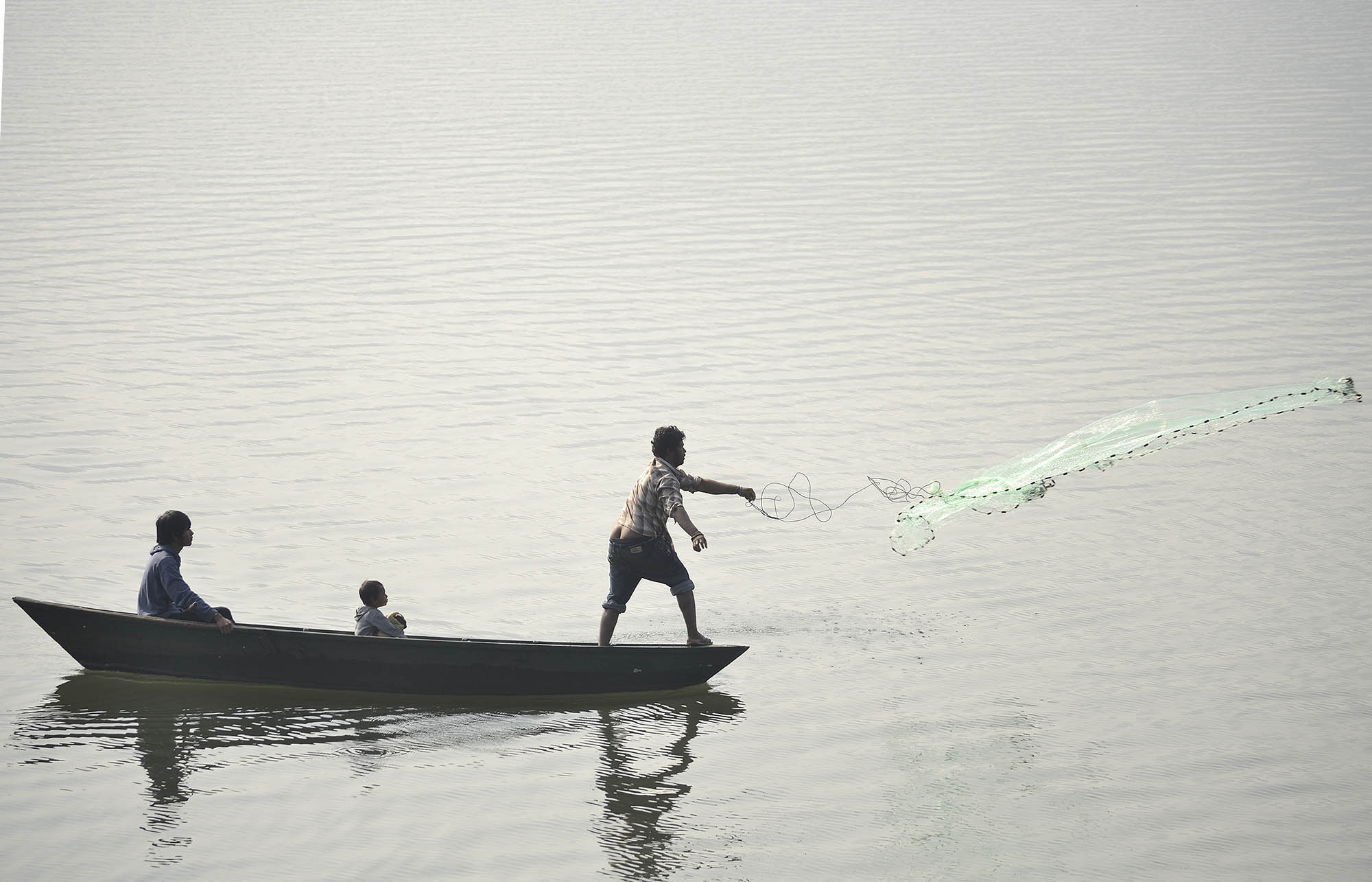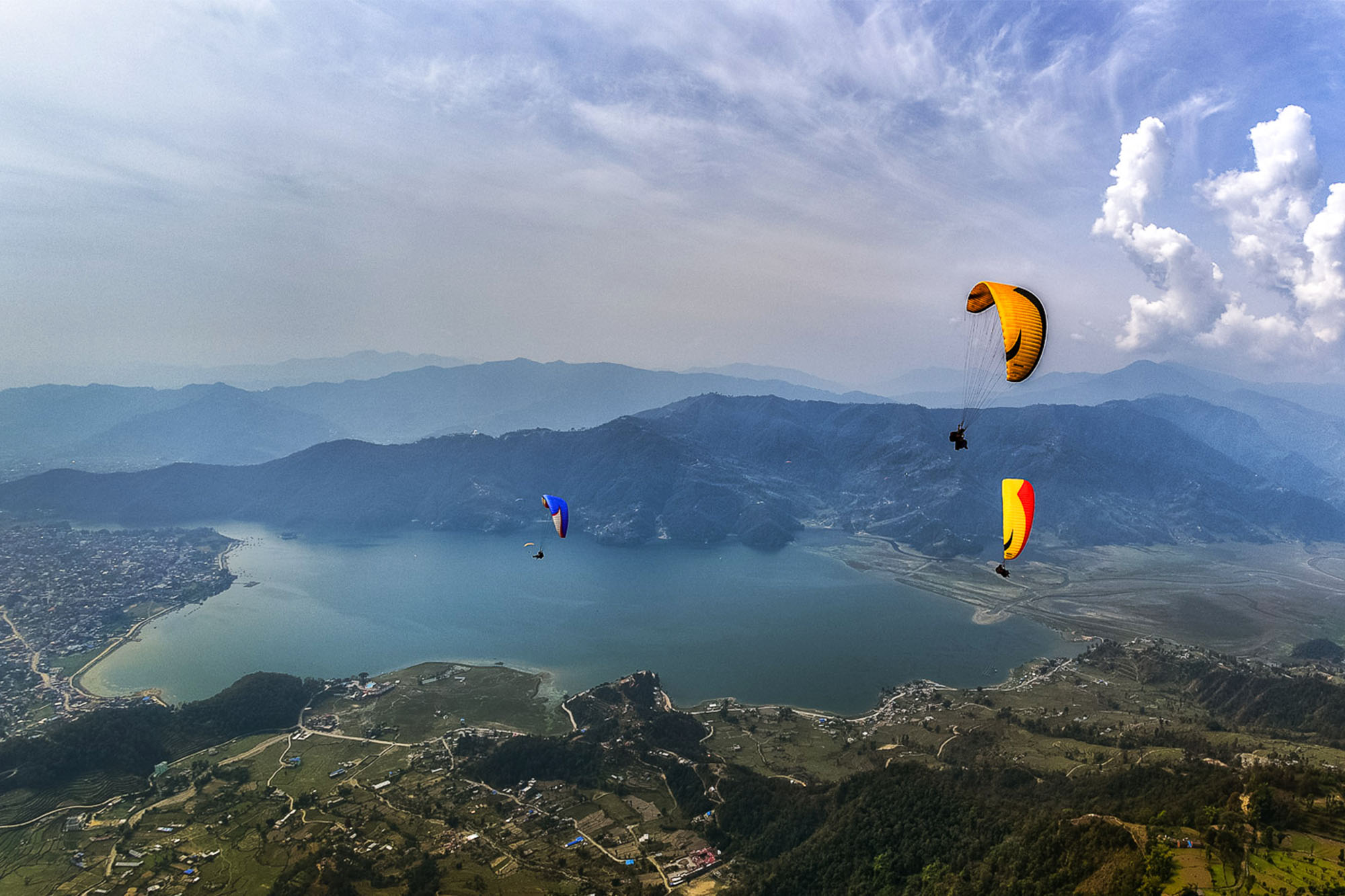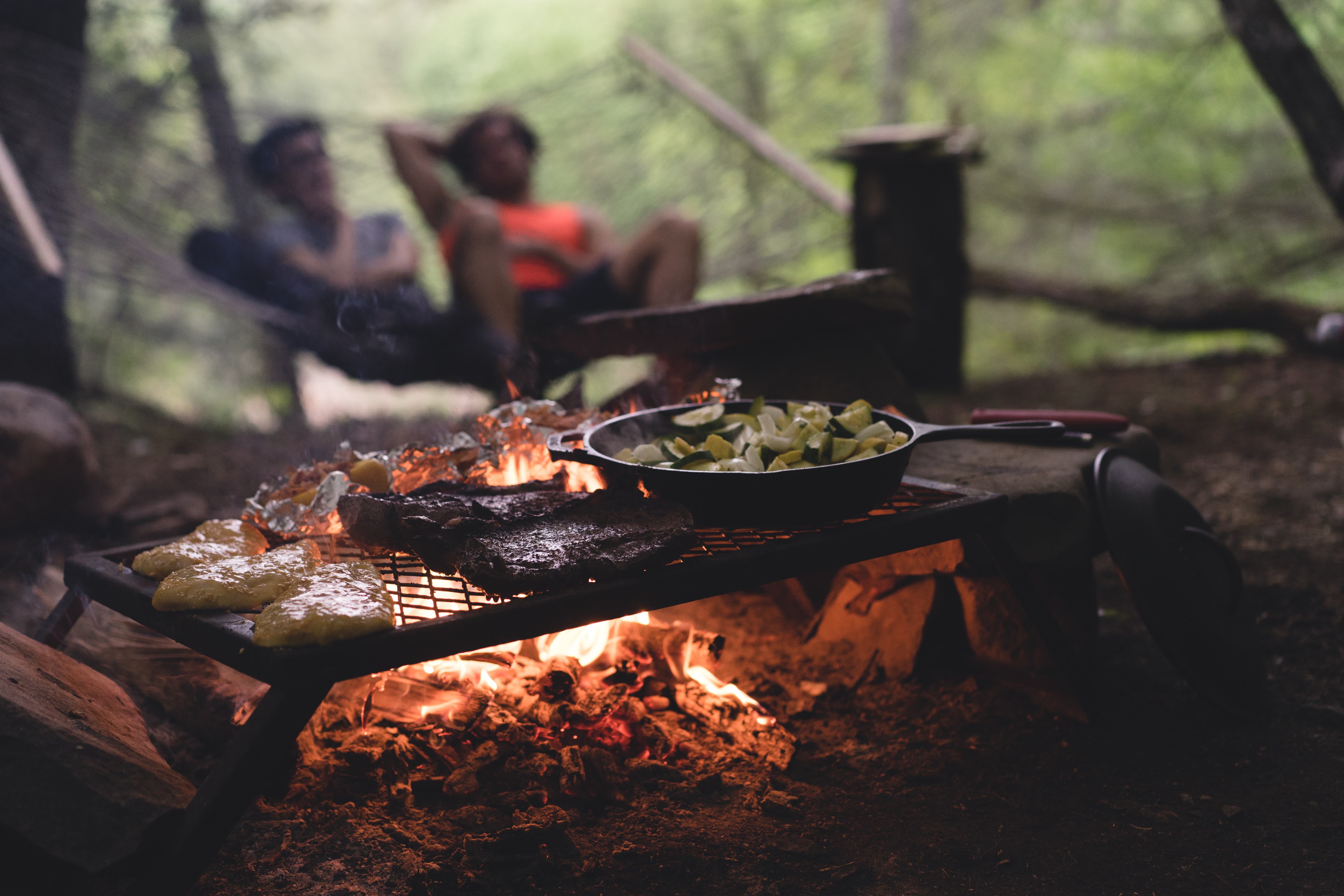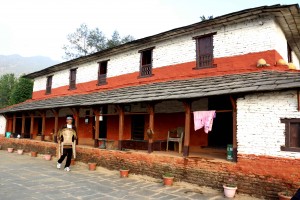A couple of kilometers before you enter Pokhara there is an area where small plateaus rise from the banks of the Seti River.
They are crowned with grass. Their walls are bare and rocks protrude from them. They are the remains of a massive avalanche that careened down from the Annapurna Range into what is the modern day Pokhara. It leveled the landscape as it went, creating the valley that is Pokhara. Much later, a lake – Phewa Tal – formed.
Without this geological background, Pokhara looks more the work of a landscape artist on a massive scale: a lake, forested hills around it and beyond them mountains. There is also an ever-growing city in the midst of all this. But Pokhara does not force its urbanity on you. Its city features stay on the sidelines; you only go to them whenever you want to.
Everywhere else, there is always a little further, higher, and deeper to go. Walk out of the town long enough and you arrive in the countryside. Climb a little and you can gaze at the girdle of the Himalayan peaks. Or you can enter the dark and dank subterranean realm of its many caves. Here are some of the choices on offer in Pokhara, a city that plays the perfect host to visitors of all shades.
1.
Boating
Photo:(above) Author, (opener) Onlinekhabar
Boating on the Phewa Tal is almost a cliché. Neither is being surrounded by dozens of other boats much fun. But get your boatman to take you further out to the lake, beyond the area in the vicinity of Barahi Temple, and you will have a quiet stretch of water to admire the landscape from.
2.
Walking
There is a buffer zone of parks between the febrile atmosphere of Lakeside and Phewa. A walk in these parks sometimes comes with unexpected bird sightings, like Egyptian vultures. A trail also hugs the shoreline. This is a vibrant corridor of local life: artists sit painting the lakes and hills, fishermen weave nets, Tibetan women sit behind their display of trinkets, kids play football and men repair old boats. Walk past the western end of Lakeside and a kilometer or so later you will be in a relatively unspoiled part of the lake. You can sit on the shore watching fishermen cast nets into the water and see waterbirds that have learned to stay away from parts of the lake where humans tend to congregate.
Lovers of long walks can try the Phewa Tal circuit, which begins at the trail to the World Peace Pagoda, then continues to Lukunswara. From there, take the right fork on the trail, which will take you to Pumdi. Ask locals in Pumdi for the way to Margi. Continue on to Pame Bazaar, where you can cross the lake on a bridge. After that either walk into Pokhara or take the occasional bus.
3.
Devi’s Falls
You hear the roar, then you feel the misty spray on your face. Though not as loud and voluminous in the dry seasons, the sight of white, foaming water hurtling down into a dark chasm strikes both awe and fear.
4.
Caves
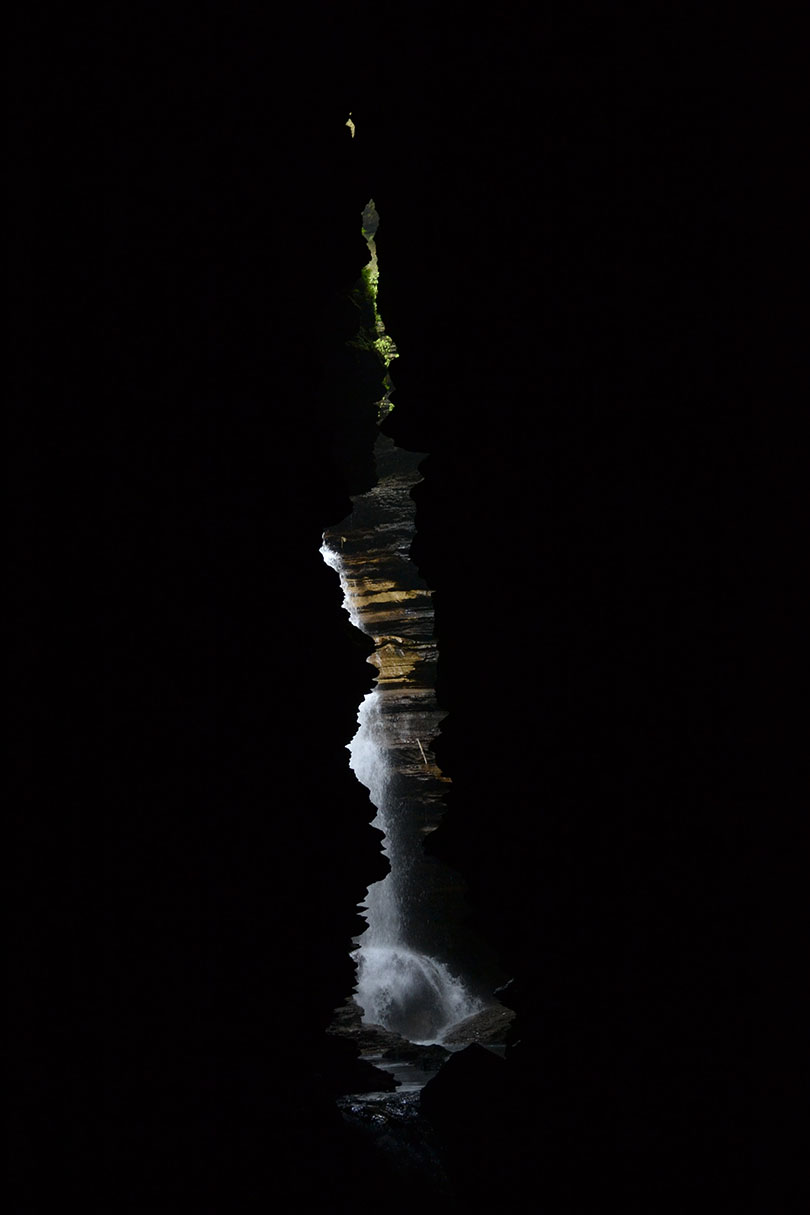
The Gupteshwor Mahadev Cave is across the road from Devi’s Falls. It’s a sacred place for Hindus as it contains a large stalagmite that is worshiped as a Shiva lingam. The highlight of this cave (if you are not there for religious reasons) is the sight of the waters of Devi’s Falls falling down through a cleft in the cave wall.
Another cave in Pokhara worth visiting is the Bat Cave. As the name suggests, this cave is home to bats, hundreds of them, which only add to the spookiness of the cavern. The most fun part of the cave is the exit, which is a narrow chute through which you need to wriggle to see the light of day.
5.
Old Town and Bindhya Basini Temple
Old Newar house on the way to Bindhya Basini Temple. Photo: Author
Pokhara is not all about a lake and caves and mountain views. Before it was a destination for paragliding or spending weekends, it was a trading town on the Nepal-Tibet trade route. That mercantile past lives on, although in the shadows, in the old part of the town.
Remnants of that era stand on the road that goes northeast from Lakeside to the Bindhya Basini Temple. After walking through an area of distastefully similar concrete houses you suddenly find yourself in front of large Newar-style houses. There aren’t that many of these old houses, so the remainder of the walk to Bindhya Basini Temple is not the most enjoyable. But the temple itself is perched on a small hillock. On a clear day, the mountains look close enough to touch.
6.
Tibetan Refugee Camps

There is a pervasive sense of loss in Pokhara’s Tibetan refugee settlements.
Its residents have lost their homeland but the villages stand as much for continuation. The Tibetans have kept their faith and inner life intact; they have fought many odds to establish themselves in a foreign land. These camps are nothing special, nothing spectacular. They don’t resemble Tibet and the inhabitants aren’t dressed like Tibetans. But then you see two huge goats saunter from door to door and get fed by old men and women. When you ask about the goats, you come to know that the entire community pitched in to buy them from people who had brought them into town to sell them to butchers. And it becomes clear that the Tibetans have saved the most vital aspect of their culture even as they have lost almost everything else.
7.
World Peace Pagoda
Photo: Ronil Pratap Thapa
This brilliant white pagoda, built by Buddhist monks from Japan, sits on one of the most scenic spots in all of Pokhara. The rewards begin on the way. The trail to the pagoda goes through forests teeming with birds. When you emerge on the ridge of the hill, there is the unforgettable view of Phewa Tal and the mountains.
8.
Paragliding
Photo: Wikimedia Commons
If waking up early to drive or hike up to a hilltop to watch the sunrise, or sweating it out on the trails to get a panoramic view of the city and mountains is not your thing, you can try paragliding. You can even opt for the unique form of paragliding called parahawking, where a raptor accompanies you and your pilot, guiding you to thermal currents.



